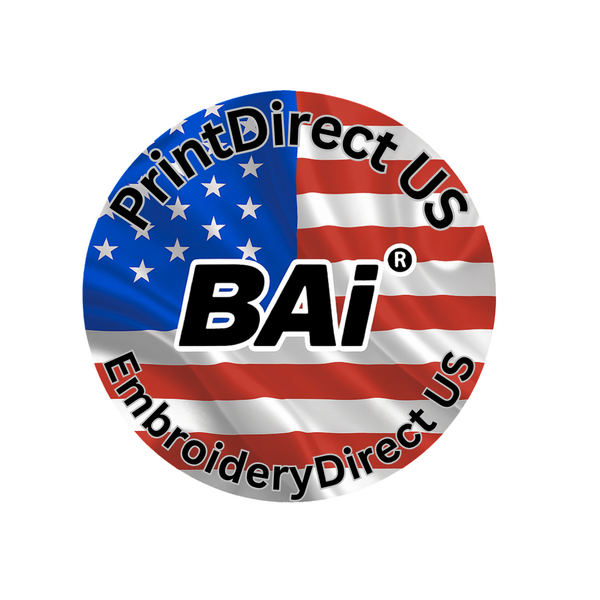
How to Price Your Embroidery Services for Maximum Profit
Share
Pricing embroidery services can be a challenging task, but it's crucial to ensure you're setting rates that reflect the value of your work while maximizing your profit. Whether you’re just starting out or have an established business, understanding how to price your embroidery services correctly can make a huge difference in your bottom line. Below are some key factors to consider when setting your prices, along with actionable tips for pricing embroidery projects effectively.
1. Understand Your Costs
Before setting a price for your embroidery work, it’s important to have a clear understanding of your costs. These include both direct and indirect costs such as:
- Material Costs: Thread, backing, needles, and stabilizers.
- Garment Costs: If you're supplying the apparel, calculate the cost of the item.
- Equipment Costs: Factor in maintenance, repairs, and depreciation of your embroidery machine.
- Labor Costs: Don’t forget to include the value of your time or any employees’ time spent on the project.
- Overhead Costs: Rent, utilities, software, and administrative expenses should be considered as well.
Once you have a good grasp of your total costs, you can begin to build your pricing structure.
2. Charge by Stitch Count
One of the most common methods for pricing embroidery services is by stitch count. Embroidery designs with a higher stitch count typically take longer to produce, require more thread, and may require more intricate work.
A good baseline is to charge per 1,000 stitches, but you can adjust the rate based on your market and costs. For example, you may charge $1 per 1,000 stitches, but for highly complex designs or rush orders, you could raise the price accordingly.
3. Add Value for Customization
Customization adds value, and customers are often willing to pay more for it. Whether it’s personalized monograms, unique logo placements, or specialty threads, consider adding an extra fee for any custom work. Customization gives your business a unique selling point, and the perceived value can justify higher pricing.
4. Consider Setup Fees
Many embroidery jobs, particularly for new clients or complex designs, require extra time for setup, including digitizing the design. A one-time setup fee is a common practice in the industry and ensures you're compensated for the time spent preparing the order.
Digitizing fees can range from $25 to $100 depending on the complexity of the design. Be sure to communicate this upfront to avoid surprises and ensure your client understands the value they’re getting from a professionally digitized logo or graphic.
5. Factor in Bulk Discounts
Offering bulk discounts can encourage larger orders, which in turn helps to boost overall revenue. For instance, if a client orders 100 embroidered hats, you might offer a 10-15% discount over the price per hat for a smaller order. However, ensure your discounts still cover your costs and leave room for profit.
Bulk pricing can also encourage repeat business, as clients will see the value in placing larger orders rather than smaller, one-off jobs.
6. Research Market Rates
While it’s important to know your costs, it’s also critical to stay competitive within your market. Research local and online embroidery businesses to see what they’re charging. Keep in mind that pricing too low may undercut your profitability, but pricing too high could deter potential clients. Striking a balance between competitive and profitable rates will help you succeed long-term.
7. Account for Turnaround Time
Time-sensitive orders or rush jobs often come with a premium. If a client needs a project completed in a shorter timeframe than normal, consider adding a rush fee. This not only compensates you for the extra pressure but also communicates the value of prompt service.
8. Be Transparent with Clients
Clear communication is key to successful pricing. Be transparent with your clients about what’s included in the price—whether it’s the cost of the garment, embroidery setup fees, or rush charges. This builds trust and ensures that clients are willing to pay for the quality and service you provide.
9. Offer Package Deals
Many businesses are attracted to package deals, especially if they’re placing larger orders or want a combination of products. Consider offering bundled pricing for orders that include embroidery on different types of garments (e.g., hats, jackets, and polos). Package deals can also include a set number of items at a reduced rate, creating an incentive for larger orders.
10. Review Your Pricing Regularly
It’s important to periodically review and adjust your pricing to reflect changes in the market, your costs, and the growth of your business. As your skills improve and your equipment upgrades, your prices should reflect the increased value you offer. Don't be afraid to adjust rates to maintain profitability.
Final Thoughts
Pricing your embroidery services doesn’t have to be overwhelming. By taking the time to understand your costs, considering market trends, and charging for the value you provide, you can ensure that your pricing structure not only covers your expenses but also boosts your profits. Remember, quality work deserves fair compensation, and setting the right price will ensure your business thrives.
